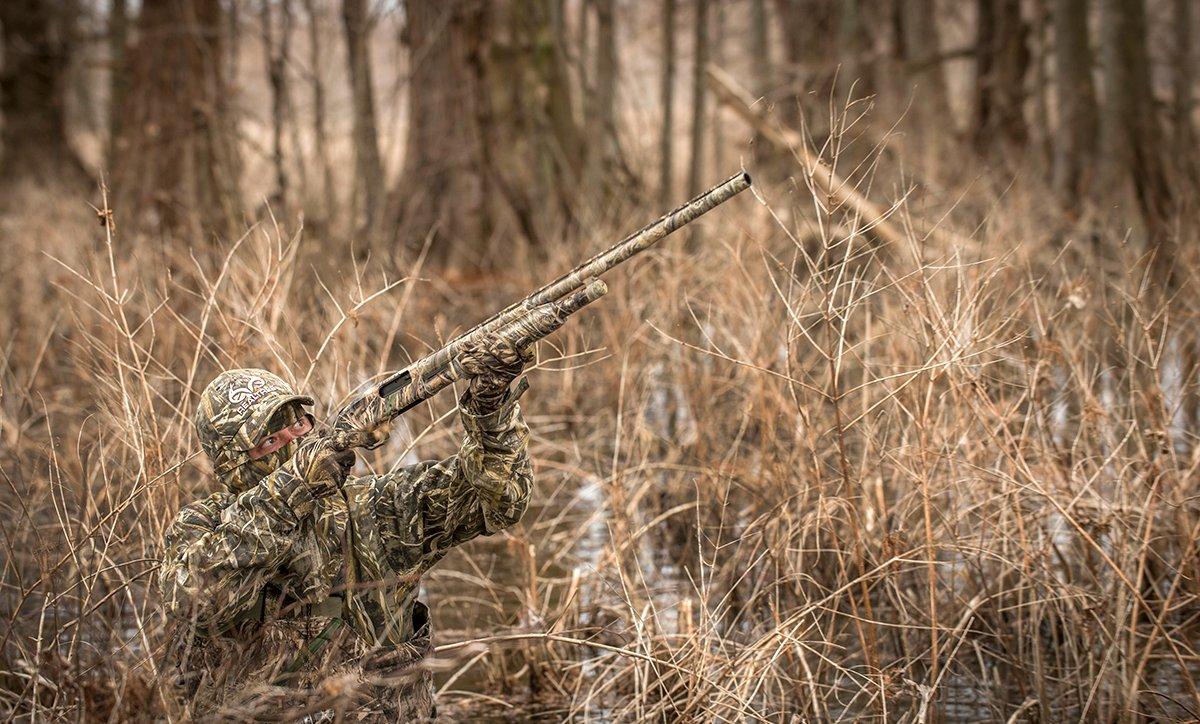A green-timber veteran walks you through a morning in the duck hunting mecca
Editor's note: This is a guest "Duck Blog" from Stuttgart native and green-timber expert Jim Spencer. Enjoy.
Nuts-and-bolts stuff is important if you're planning a free-lance trip to the green timber public areas around Stuttgart, but none of it gives you the flavor of the experience. For a taste of that, come with me on a typical waterfowl hunt to Bayou Meto WMA.
We won't need a boat, because where we're going is only a 20-minute walk from the parking area. (Sorry, I'm not going to tell you which parking area.)
We'll leave the truck long before the sun starts coloring the sky, so bring a good flashlight. And be careful walking in; remember those underwater surprises. Getting wet is no fun, especially at the beginning of a long hunt.
Normally, I don't have a specific destination in mind for a green-timber hunt, and that's the case this morning. Not yet, anyway. At this point, all we want to do is get back in, as far as possible from other hunters, moving through the knee-deep water until, as one of my old duck hunting buddies used to say, it feels right. Then we'll stop, lean against trees or find a handy log to sit on, swap lies and wait for daylight. Only when the sky starts to lighten will we be able to tell what the ducks are doing this morning. If we're lucky, we won't have to adjust our position much.
Here. This place feels right. See how the canopy is broken, where that big oak blew over and left a hole? It's a likely spot; the opening gives ducks a place to drop down through, and it also gives us a hole to shoot up through. It's getting gray in the east now, and I've already heard a few bunches of mallards trading back and forth.
Ten minutes until shooting time. Lots of ducks in the air now, and plenty of them are low and looking. There's a little bunch now, sifting through the trees less than 50 yards east of us. Maybe we won't have to move at all to get some action.
We'll call a little bit between now and shooting time. Not to work ducks, but to let other hunters know our position, so they won't crowd us too much. It's considered polite in these heavily-hunted public woods to let other folks know where you are.
Oops, shooting time is upon us, and now the law is off the duck. It's time to load our guns and get to work.
There, look to the east. See that bunch, low, about 200 yards away? They look like working ducks, if we can get their attention before they get any lower … .
Ah, good, they heard us, and they're turning. We'll call a little more to give them a line, shut up until they pass overhead, and then hit 'em with a quick come-back call as soon as they're behind us. Don't shoot at 'em on this pass; they're a little too high.
OK, they've gone by. Now help me with the come-back stuff. Make it short and choppy, and put some feeling into it. Talk to them like you mean it, because those guys over there a quarter-mile south know how to blow their calls. They'll take this little bunch away from us if we let them.
Good. That four-note run you made sounded good, and my quick chatter wasn't bad, either. The ducks thought so, too. Did you see them break around at your first quack? I thought that lead drake was going to break his neck, he swung so fast. Let's let them make another pass. They'll probably be low enough when they come over this time, but what we're seeing right now is what this green-timber stuff is all about, and it would be a shame to end it too soon. No other hunters are crowding us, and I think we can get these ducks down into the timber.
Same thing this time. Wait till they pass, and then hit 'em with the short, urgent stuff. Keep your tree between you and the ducks, and hide your face with your hat brim. I want to look at them as bad as you do, but if they see us rubber-necking, it's all over. Peek if you gotta, but be careful.
All right. They came around tight and quick that time, and they're still losing altitude. I think they'll break the treetops this time, but even if they don't, we'd better take 'em before something goes wrong. They're plenty low enough now. You pick a greenhead on the left side of the flight, and I'll find one on the right. Don't shoot a hen, and stop shooting when you've killed one drake. The ducks are flying well now, and we can stretch our hunt a little that way.
Here they come. They're low enough.
Are you ready?
Click here for more Realtree waterfowl hunting content. And check us out on Facebook.







